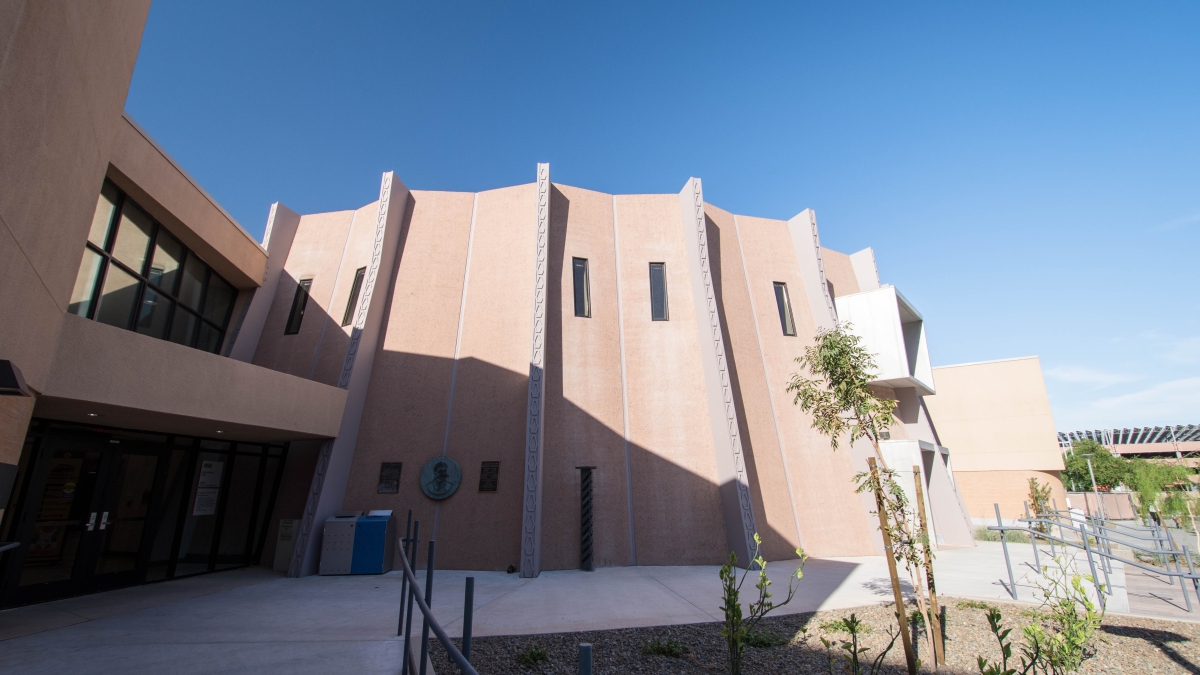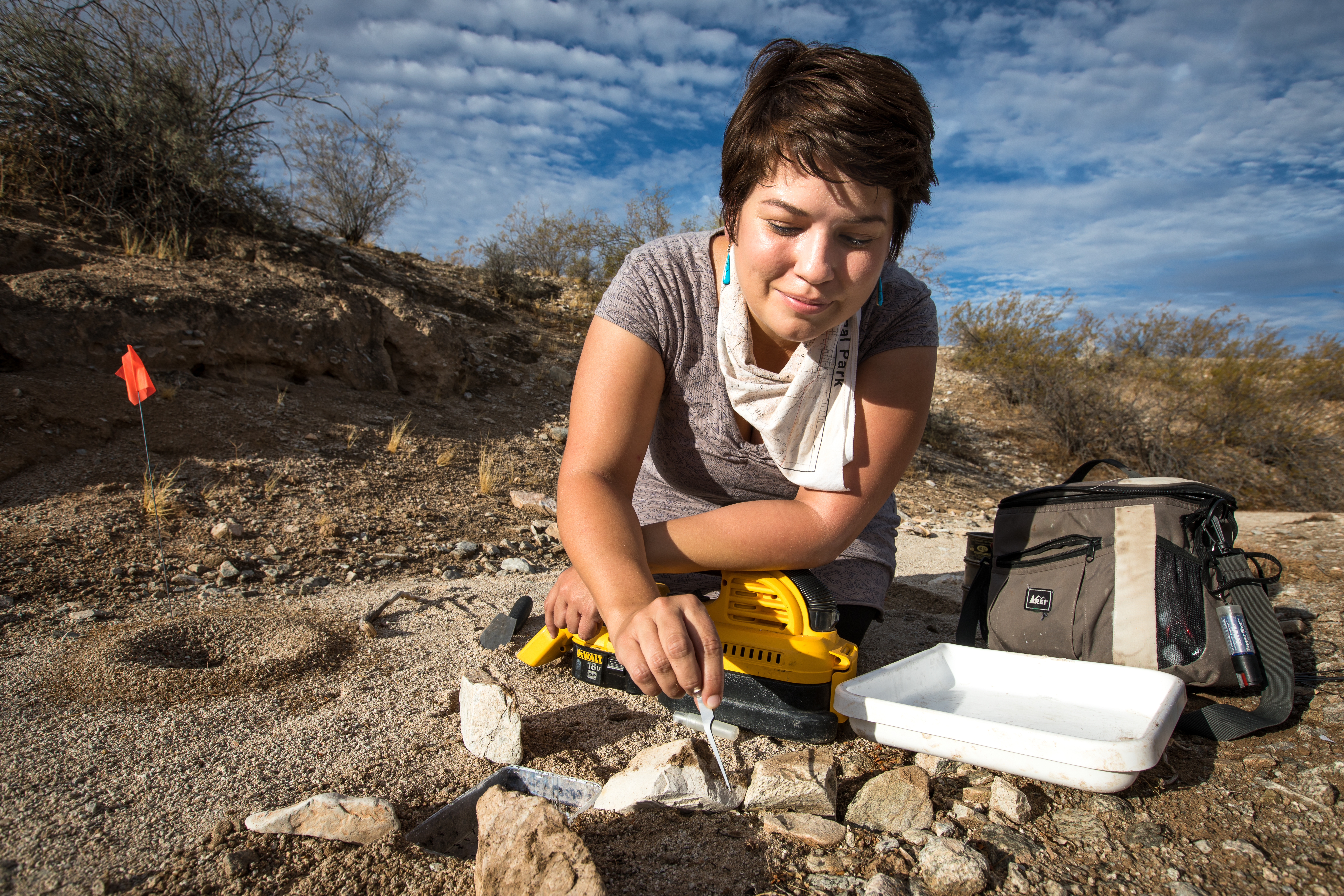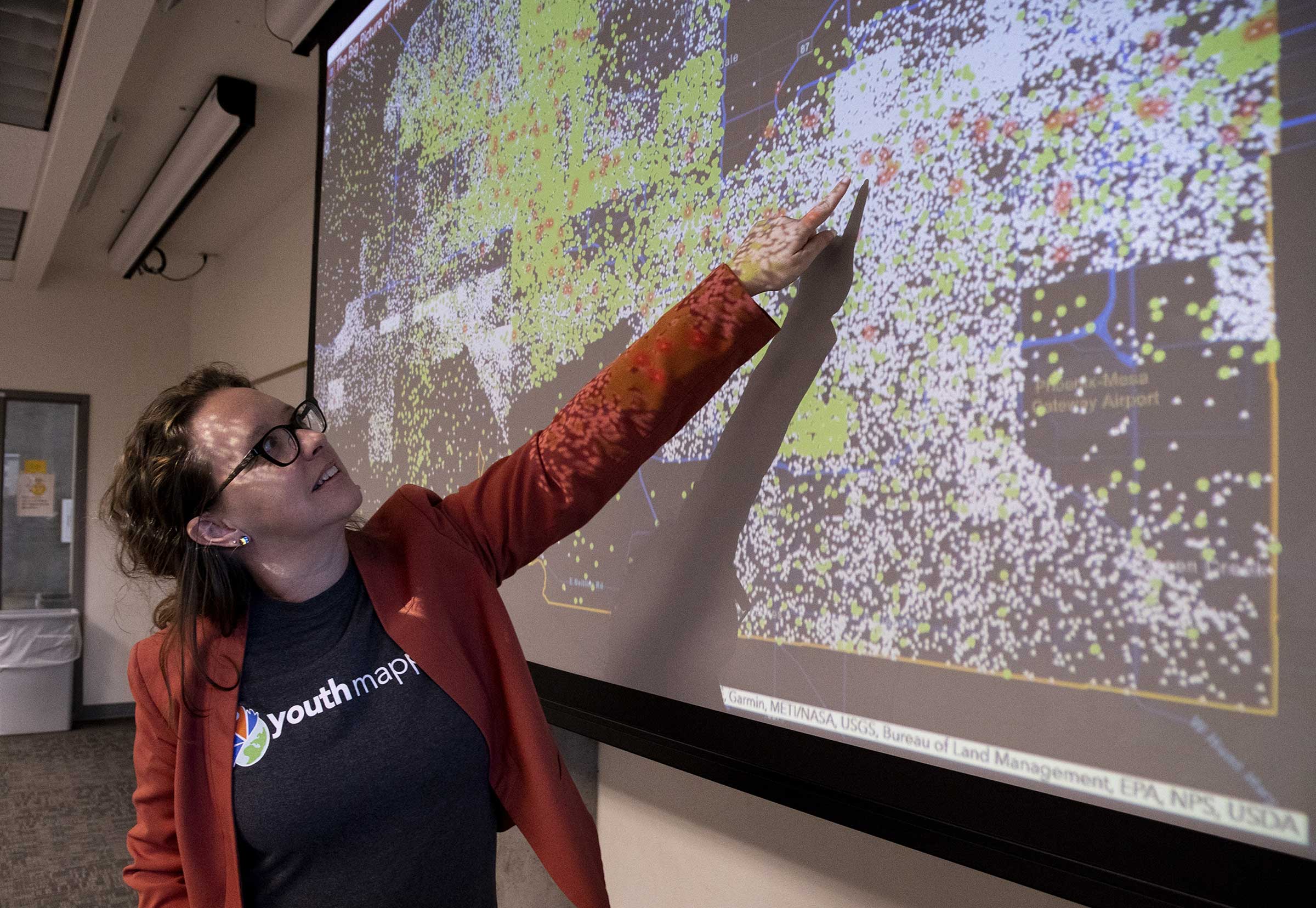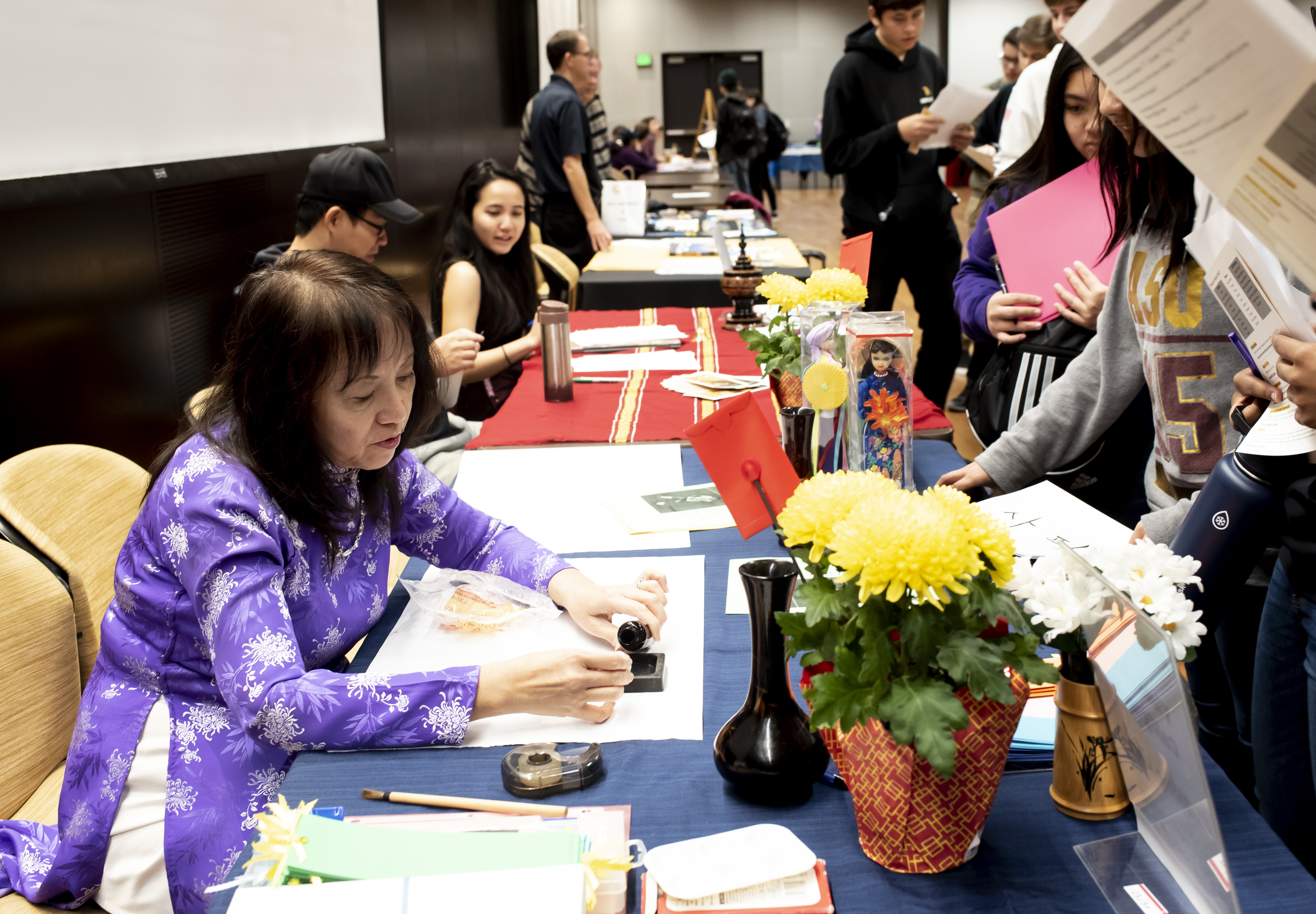The College of Liberal Arts and Sciences is the largest and most diverse academic unit at Arizona State University. With 23 field-spanning departments and schools, its courses delve into everything from how civilizations deal with disasters and construct legends to the chemistry of human emotions and the cultural significance American Indian film. But what does that actually look like?
We asked academic leaders from the natural science, social science and humanities divisions around The College to recommend standout courses offered through their units, both in-person and online. All are offered this fall, and many are available to nonmajors. Registration information is provided through the link.
Take a look at The College’s top course picks.
Natural sciences
BIO 432: Why people steal, cheat and lie (ASU Online)
They may not seem like quantifiable questions, but School of Life Sciences Director Kenro Kusumi said this ASU Online course examines the biological drivers behind human behavior.
“The course explores the ecological and evolutionary causes of selfishness and cooperation in human societies,” he said. “Students apply biological models to predict patterns of behavior in human populations and evaluate these models with empirical data.”
Kusumi said this interdisciplinary course pulls from biology, psychology, anthropology, criminology, sociology and philosophy to develop new perspectives on the larger human experience.
—
PHY 498: Sustainable Energy
From controlling indoor environments and powering vehicles to the production of materials, energy touches nearly every facet of our lives.
Department of Physics Chair Peter Bennett said students in this course use physics to understand how energy interacts with everyday life and the feasibility of ideas like the Green New Deal and zero-carbon alternatives.
“Putting in the numbers is essential to deciding whether something is practical, so we do a lot of order-of-magnitude calculations,” Bennett said. “This class will appeal to students who are curious about society’s energy needs and who are capable of some quantitative reasoning.”
—
CHM 107: Chemistry and Society (ASU Online)
“You never use chemistry outside the lab.”
That’s a statement Kirstin Hendrickson, a professor in The College’s School of Molecular Sciences, hears time and again.
But where some see a science isolated to the lab, Hendrickson sees a multifaceted field found in every aspect of our world, from climate change and water potability, to medicine, alternative energy and even human emotions.
“The reality is that chemistry is all around us and inside us, all the time, every day,” she said. “This class was written to help students see and become conversant in the chemistry taking place in the real world, and strives to answer the critical question: When am I ever going to use this again?”
—
STP 226: Elements of Statistics
In today's information age, data is everywhere. Donald Jones, associate director of undergraduate studies at the School of Mathematical and Statistical Sciences, said being able to extract useful knowledge and gain a sound understanding of complex data sets has never been more important.
“Statistical analysis is pervasive in many fields, including political, social, medical and economic sciences, advertising and sports, artificial intelligence, speech and image recognition, gaming, health care and fraud detection,” he said. “This could be the most useful class you will take at ASU because you’re developing a solid understanding of the way data works in the modern world.”
—
SES 106: Habitable Worlds
What makes the planet habitable? Are there others like ours? In this online course from the School of Earth and Space Exploration, students explore those questions using interactive activities that go beyond the classroom. Meenakshi Wadhwa, the school’s director, said the course delves into ideas once relegated to science fiction, all without textbooks, lectures and traditional exams.
“Astronomers are discovering planets around other stars, planetary scientists are exploring the worlds in our solar system, biologists are unlocking the secrets of metabolism and evolution and geoscientists are determining how the Earth supports life,” she said. “As we struggle to build a sustainable future for ourselves, all of us are finding out how technologically advanced civilizations rise, and how they might fall — this course surveys all of these topics.”
—
Social sciences
POS 394: Fake News: How to Identify and Refute It
In this online course from the School of Politics and Global Studies, Gina Woodall, a senior lecturer in the school, delves into one of the most pressing media issues impacting society today.
Her syllabus asks: “Given the breadth of information pummeling us online, TV, radio, and in blogs, newspapers and social media, how do we know what is real (fact-based) and what is fake (false)?”
School of Politics and Global Studies Director Cameron Thies said the topic is especially important on the brink of the presidential election next year.
—
GIS 294: Drones to Satellites: Observing Earth from Above
Humans have spent centuries imagining a birds-eye view of the world. Thanks to modern technology, we now have the potential to see more detail than ever before.
“Seeing the Earth from above can have a profound effect on how we view our planet,” said Trisalyn Nelson, director of the School of Geographical Sciences and Urban Planning. “Modern technology has given us everything from huge satellites orbiting hundreds of miles above Earth, to small drones the size of a shoebox that can be launched just about anywhere to capture imagery of our rapidly changing planet — this course is an introduction to Earth observation and devices it uses."
—
AIS 394: American Indian and Indigenous Film
Plenty of damaging stereotypes have been born out of Hollywood, but what are the movements that form in their wake? This course, taught by assistant professor Cheryl Bennett, delves into how Native Americans have historically been portrayed on screen and examines the Native-owned production companies that are challenging the narrative.
Stephanie Fitzgerald, who took the helm as director of the American Indian Studies program this summer, recommends the course for its unique perspective and broad appeal.
“American Indian, Native American and indigneous film is a burgeoning industry and field of academic study,” she said. “But the broader community may not be aware of that — taking this course would open up a whole new world.”
—
TCL 314/SOC 314: Transborder Latin American Migration to the U.S.
Migration is an intrinsic part of human history — not just here in Arizona, but around the world. The course, taught by Professor Eileen Díaz McConnell, examines the history and present state of immigration in the U.S. and elsewhere in the world.
“The U.S. has the highest number of international immigrants in the world,” said Irasema Coronado, director of The College’s School of Transborder Studies. “Whether it’s students understanding more about the clients they serve in future careers, the diversity of the people they interact with in their community, or their own family’s history, issues of immigration touch everyone in some way.”
—
ASB 327: Disaster!
From Pompeii to Hurricane Maria, disasters have always been a part of the human experience. What causes them? And how do our responses help or hinder our survival?
Kaye Reed, director of the School of Human Evolution and Social Change, said those are the questions students can expect to tackle in this course, taught by President’s Professor Amber Wutich.
“This course uses hands-on activities to help students learn how to use tools like disaster vulnerability assessments and evaluations of best practices for disaster responses, equipping them to better understand and respond to future crises facing humanity,” Reed said.
—
FAS 294: The Compassion course
What is compassion, and how can it be cultivated? Richard Fabes, director of the T. Denny Sanford School of Social and Family Dynamics, said this course helps students better understand what’s behind the act.
“This course is taught by Dr. Amy Reesing and uses updated behavioral science to help students understand the need for compassion in our lives and the role of self-compassion for health and well-being,” he said. “I think it’s a really meaningful class to students.”
—
Humanities
ENG 321: Shakespeare
Shakespeare is a household name around the world. But how many of us can say we truly know the Bard? Taught by Department of English Professor Jonathan Hope, this course takes a deep dive into six plays to help students gain a real understanding of Shakespeare’s work and how it figures into aspects of the modern world.
“This is not the course that everyone expects,” said Jeffrey Cohen, dean of humanities at The College. “Everyone thinks they know Shakespeare, but in the class students will come to realize that most of what they think they know is wrong.”
—
MCO/POS/REL 394: Exploring Religion, Politics and the Media
Politics and religion are at the crux of many aspects of our daily lives. Taught jointly by School of Historical, Philosophical and Religious Studies Professor Tracy Fessenden and Professor of Practice Fernanda Santos from the Walter Cronkite School of Journalism and Mass Communication, this course examines how both topics are covered in the media.
“In a ‘post-truth’ era, covering politics and religion has been proven difficult,” said Richard Amesbury, director of The College’s School of Historical, Philosophical and Religious Studies. “This course will examine the ways journalists approach the coverage of complex issues and immerse students into the world of journalism with hands-on workshops.”
—
SLC 123: Gods and Monsters: Comparative Mythology
Human civilizations have used mythology to explain the world for millennia. Yet, from ancient Greece and China to Africa and Native America, legends from radically different cultures often share common themes. Why?
That’s one question students explore in this course taught by Sarah Bolmarcich, a lecturer in The College’s School of International Letters and Cultures.
“Students will encounter oral traditions and folklore such as the Brothers Grimm, trickster stories in African American folklore, Native American oral traditions, and the origins of various vampire legends,” said Nina Berman, the school’s director. “We all know the creatures; now discover the stories and myths that inspired them.”
Top photo: Located on the Tempe campus, Armstrong Hall is the academic home of The College of Liberal Arts and Sciences at Arizona State University.
More Science and technology

Diagnosing data corruption
You are in your doctor’s office for your annual physical and you notice the change. This year, your doctor no longer has your health history in five-inch stack of paperwork fastened together with…
Large-scale study reveals true impact of ASU VR lab on science education
Students at Arizona State University love the Dreamscape Learn virtual reality biology experiences, and the intense engagement it creates is leading to higher grades and more persistence for biology…

ASU-led space telescope is ready to fly
The Star Planet Activity Research CubeSat, or SPARCS, a small space telescope that will monitor the flares and sunspot activity of low-mass stars, has now passed its pre-shipment review by NASA.…





